Classifying Matter Teaching Resources
Teach students how to classify matter as pure substances or mixtures with engaging activities aligned with the Australian science curriculum.
This collection of printable and digital worksheets, experiments and activities was created by the teachers of the Teach Starter team to save you time on your lesson plans. That means you'll find resources already carefully reviewed by an expert teacher, plus editable options so you can make the adjustments you need to meet your students' needs.
Need some help with your lesson plans? Read on for a guide from our teacher team, including handy definitions of pure substances and mixtures to share with your students.
How Is Matter Classified?
Before you can dive into actually classifying matter, it helps to explain to students what it actually means to classify matter. Here's a helpful explanation from our teacher team that you can use with your class:
Classifying matter is how we organise different types of matter using its properties or characteristics to help us separate the types into different groupings.
We can classify all the matter around us into just two separate types:
- Pure substances
- Mixtures
What Is a Pure Substance? A Kid-Friendly Definition
Let's break down pure substances in a way your science classes can understand, shall we?
A pure substance has the following characteristics that help us with classification:
- It is made up of only one type of matter.
- It cannot be separated into other substances by physical means.
Pure substance can be broken down into two categories:
- Elements — These are substances made up of just one kind of atom and cannot be broken down or transformed by a chemical reaction. For example, helium is an element that we classify as a pure substance.
- Compounds — A compound is made up of two or more elements that have bonded together to form one. These elements are chemically bonded together and cannot be separated. Water is a compound that we classify as a pure substance as its elements — hydrogen and oxygen — are bonded together.
What Is a Mixture? A Kid-Friendly Definition
If a pure substance is comprised of just one type of matter and cannot be broken down, it might not surprise your students to hear that mixtures have the opposite characteristics.
A mixture:
- Is made up of two or more different types of matter
- Can be separated by physical means
A kid-friendly example of a mixture is a bowl of milk and cereal. There are two different types of matter in the bowl, and you can separate the two types (although it might get messy!).
- Plus Plan
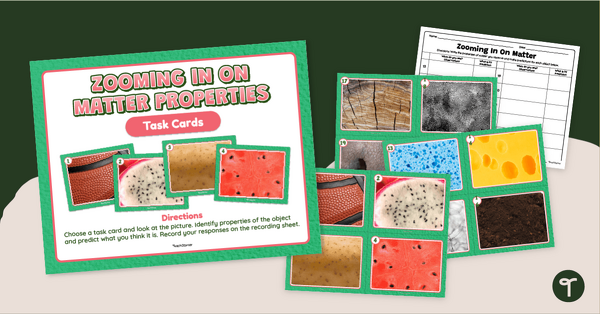
Observing Matter Picture Zoom Task Cards
Challenge your students to observe the properties of matter with an engaging Matter Observation Picture Zoom Activity.
- Plus Plan
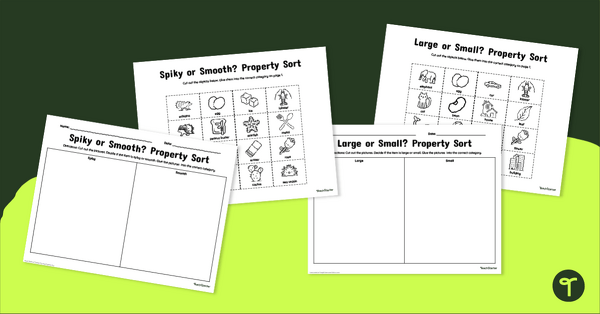
Observable Properties of Matter Cut and Paste Worksheets
Practise sorting objects based on observable properties with a pair of printable cut and paste worksheets.
- Free Plan
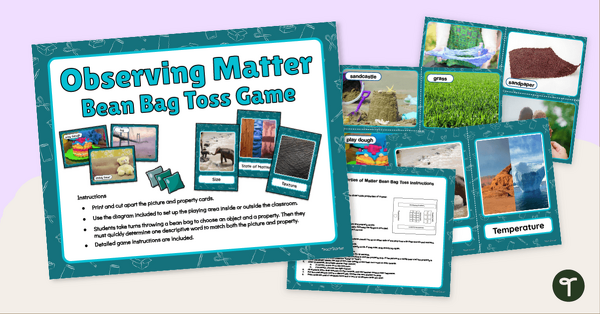
Properties of Matter Game - Bean Bag Toss
Play an exciting Properties of Matter game by downloading a printable Matter Bean Bag Toss Game!
- Free Plan
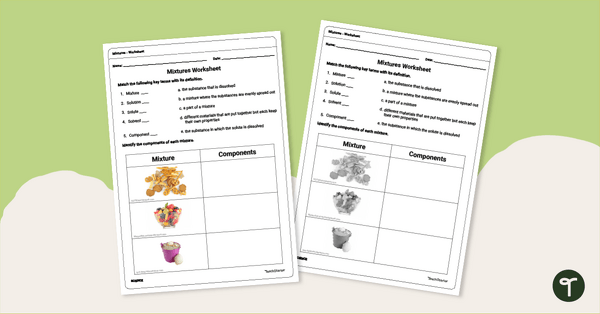
Mixtures Worksheet
Practise identifying mixtures and their components with a printable Mixtures Worksheet.
- Plus Plan
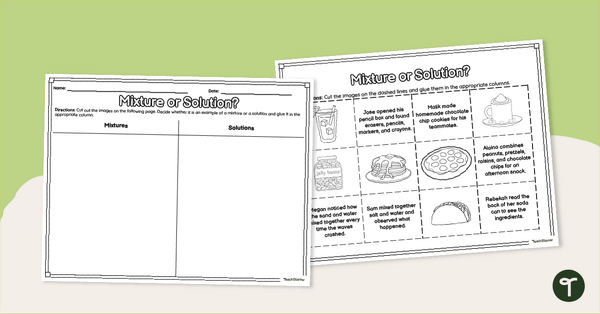
Mixture or Solution? – Cut & Paste Worksheet
Categorise substances according to if they are a mixture or a solution with this cut-and-paste worksheet.
- Free Plan
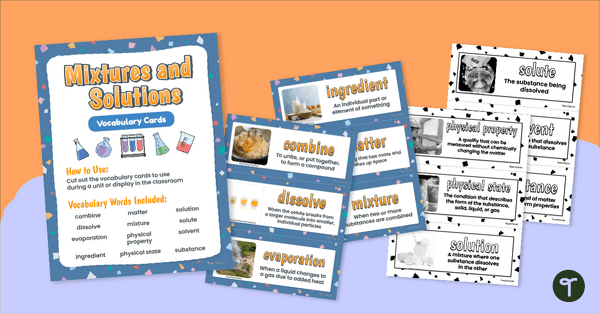
Mixtures & Solutions – Vocabulary Cards
Reinforce science vocabulary in your classroom with this set of word wall cards that focus on mixtures and solutions.
- Plus Plan
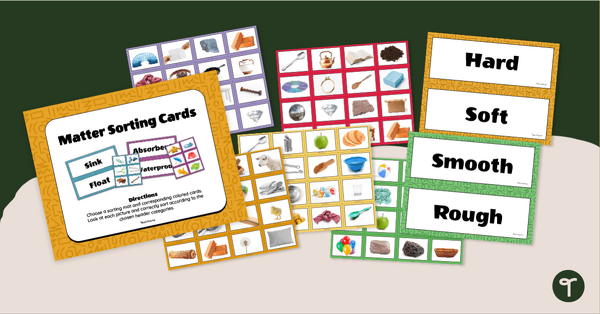
Sort It Out! Properties of Matter Activity
Use our Properties of Matter Sorting Activity cards to create an engaging Matter Sorting Station in your classroom.
- Plus Plan
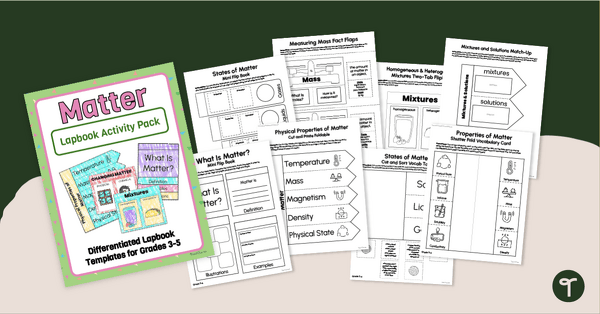
Matter Lapbook - Foldables for Science
Use our printable Matter Lapbook Foldables to teach your students about the states of matter, characteristics of matter, and changes in matter.
- Plus Plan
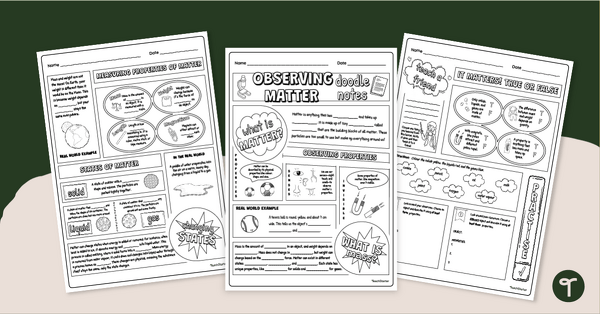
Observing Matter Doodle Notes - Graphic Organiser
Use our Observing Matter Doodle Notes to help your students discover the states, properties, and changes in matter.
- Free Plan
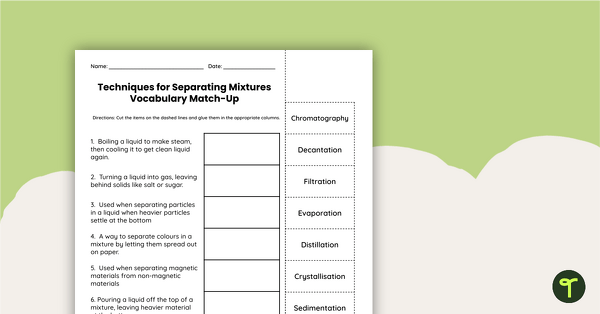
Mixture Separation Techniques Worksheet - Cut and Paste
Review the six techniques for mixture separation with a printable Separating Mixtures Vocabulary Worksheet.
- Plus Plan

States, Properties, and Changes in Matter Activity Choice Boards
Use printable Matter Project Choice Boards to assess student knowledge of states, properties, and changes in matter.
- Plus Plan
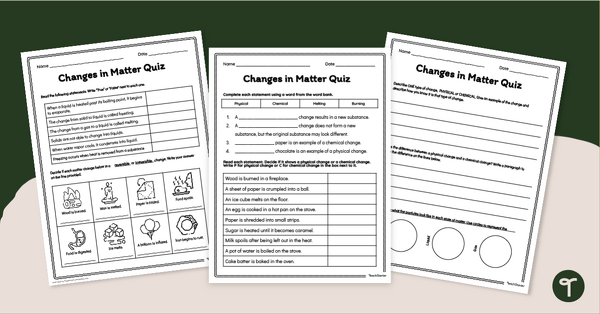
Physical and Chemical Changes Quiz
Assess your students' knowledge of physical and chemical changes in matter with a printable Physical and Chemical Change Quiz.
- Plus Plan

Physical Properties of Matter Poster Pack
Discover the physical properties of matter with a set of printable Properties of Matter Posters for the classroom.
- Plus Plan
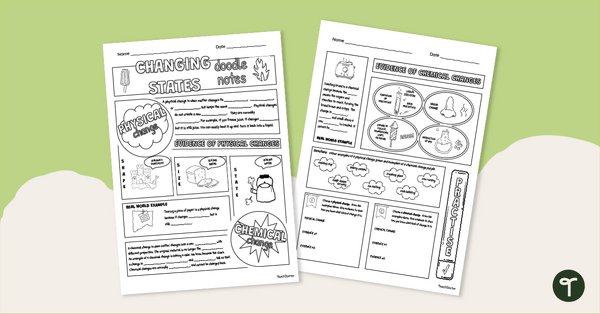
Chemical and Physical Changes in Matter Doodle Notes Template
Use our Chemical and Physical Change Doodle Notes Template to encourage your students to understand more about changes in matter.
- Plus Plan
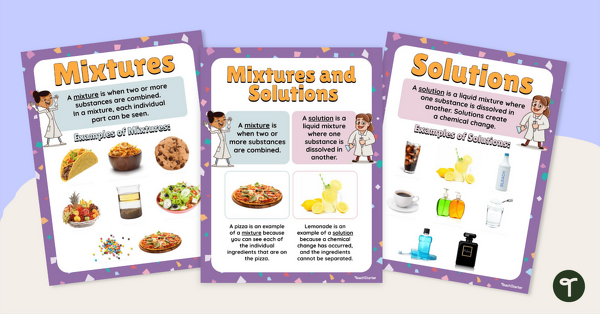
Mixture vs Solution Anchor Chart Pack
Display information about mixtures and solutions with this set of science posters.
- Plus Plan
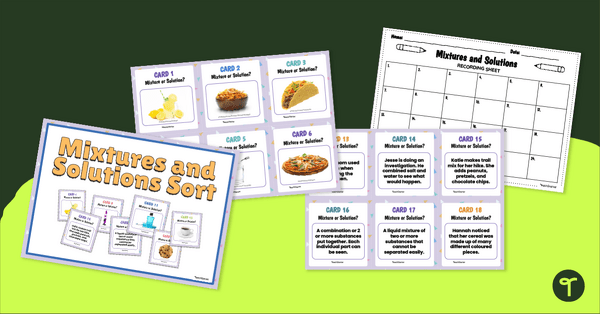
Mixtures and Solutions Sorting Activity
Distinguish between mixtures and solutions with this 24-card sorting activity.
- Plus Plan
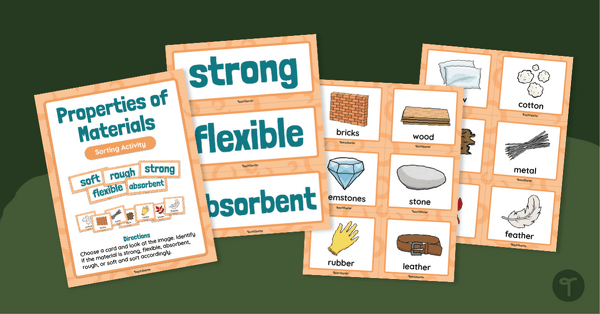
Properties of Materials Sorting Game
Teach your little learners about the basic properties of materials with an engaging sorting activity.
- Free Plan
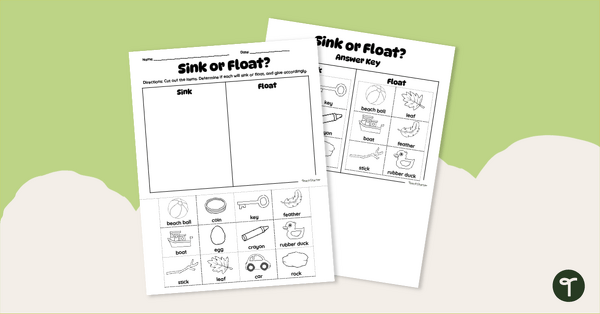
Sink or Float? Worksheet (Cut and Paste)
Identify objects that sink and float with a printable Sink or Float Worksheet PDF.
- Plus Plan
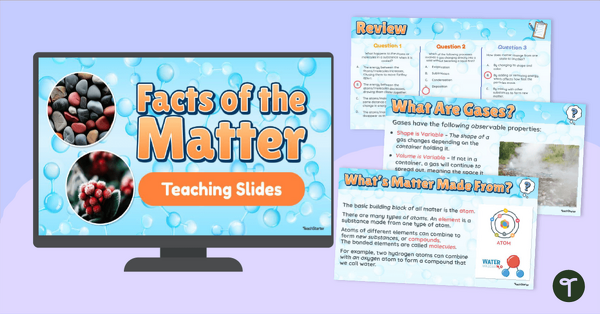
Facts of the Matter PowerPoint Presentation
Intoduce your students to matter and change with an engaging interactive teaching presentation for Year 5.
- Free Plan
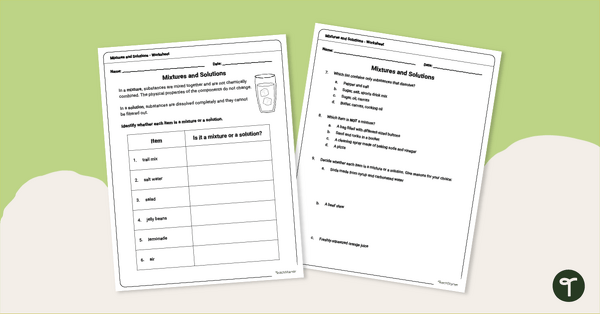
Mixtures and Solutions Worksheet
Identify the differences between a solution and a mixture with a printable Mixtures and Solutions worksheet for year 7.
- Plus Plan
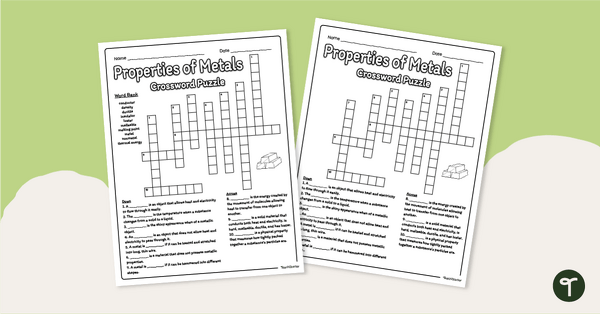
Physical Properties of Metals Crossword Puzzle
Review vocabulary and and various properties of metals with a printable science crossword puzzle.
- Plus Plan
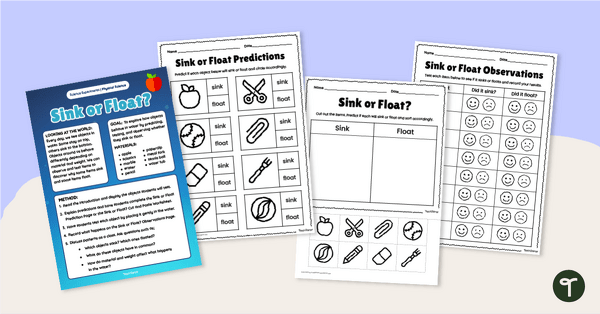
Sink or Float Experiment Pack (F-1)
Explore properties of matter and boost science inquiry skills with a Sink or Float Science Experiment.
- Plus Plan
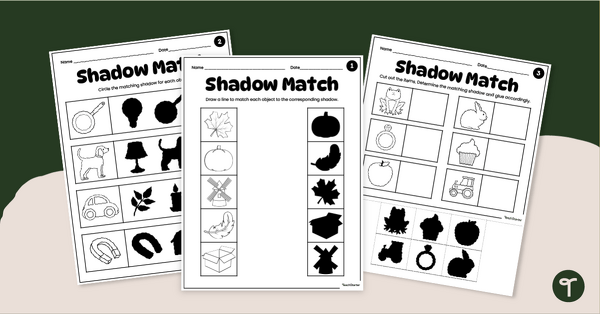
Shadow Matching Worksheet Pack
Use our printable Shadow Matching Worksheet pack to explore shape matching and help your students practise observing properties of objects.
- Plus Plan
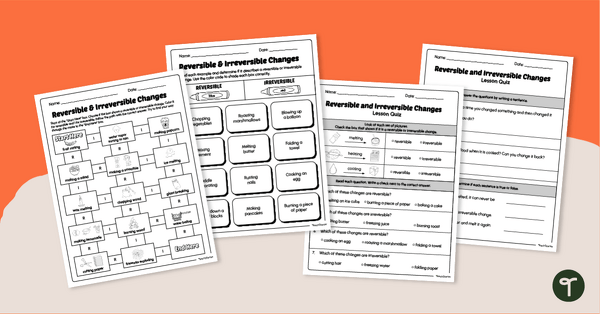
Reversible and Irreversible Changes Worksheet Pack
Download our Reversible and Irreversible Changes Worksheet Pack to help your students learn about temporary and permanent changes in matter.
- Plus Plan
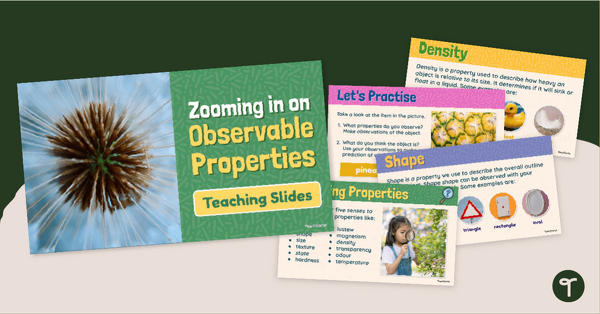
Zooming in on Matter Properties Teaching Slides
Zoom in on the Observable Properties of matter with an engaging Properties of Matter Teaching Slideshow.
- Free Plan
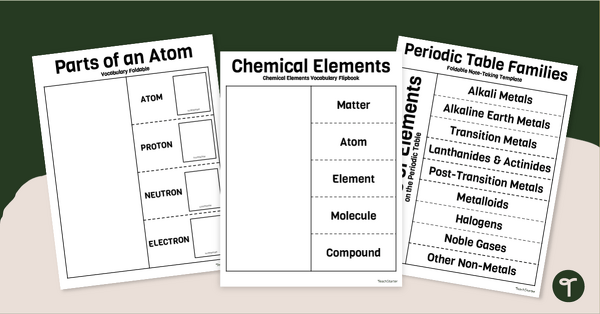
Atoms and Elements Vocabulary Foldables
Use our Chemistry Vocabulary Foldables to highlight key vocabulary terms when learning about atoms and elements on the periodic table.
- Plus Plan
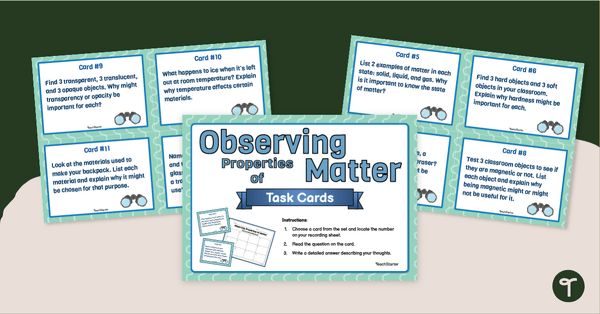
Observing Properties of Matter Task Cards - Year 5
Practise observational skills and discover the characteristics of matter with a set of printable Year 5 Properties of Matter Task cards.
- Plus Plan

Describing Matter Properties Worksheet Pack
Observe and describe examples of matter with a Matter Properties Worksheet Pack.
- Plus Plan
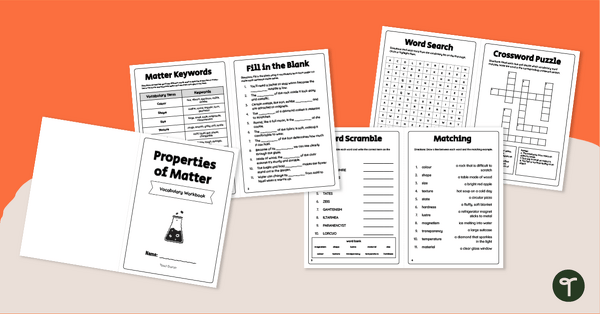
Properties of Matter Activity Book
Review key vocabulary and concepts surrounding the characteristics of matter with a Properties of Matter Review Activity Book.
- Plus Plan
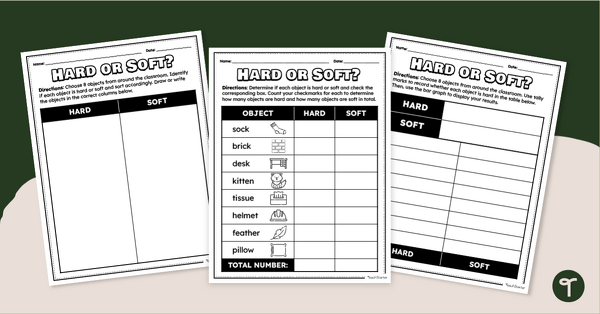
Hard or Soft? Describing Matter Activity Sheets (F-1)
Explore the world of matter with Describing Matter Activity Sheets for early years students.
- Plus Plan
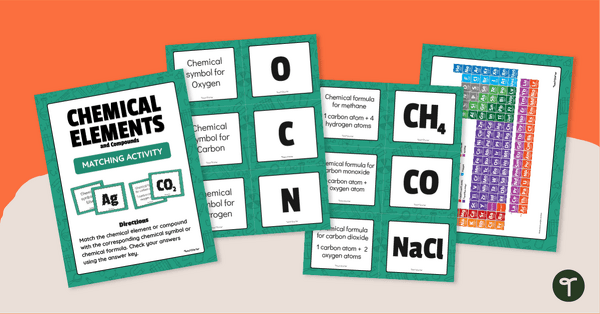
Chemical Elements and Compounds Matching Activity
Match chemical symbols and formulas with their corresponding elements and compounds with a printable Chemical Elements Matching Game.
- Plus Plan
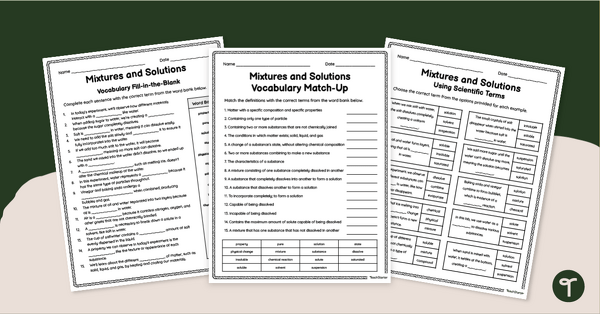
Mixtures and Solutions Worksheet Pack - Vocabulary Review
A vocabulary matching task relating to pure substances and mixtures.